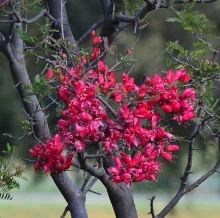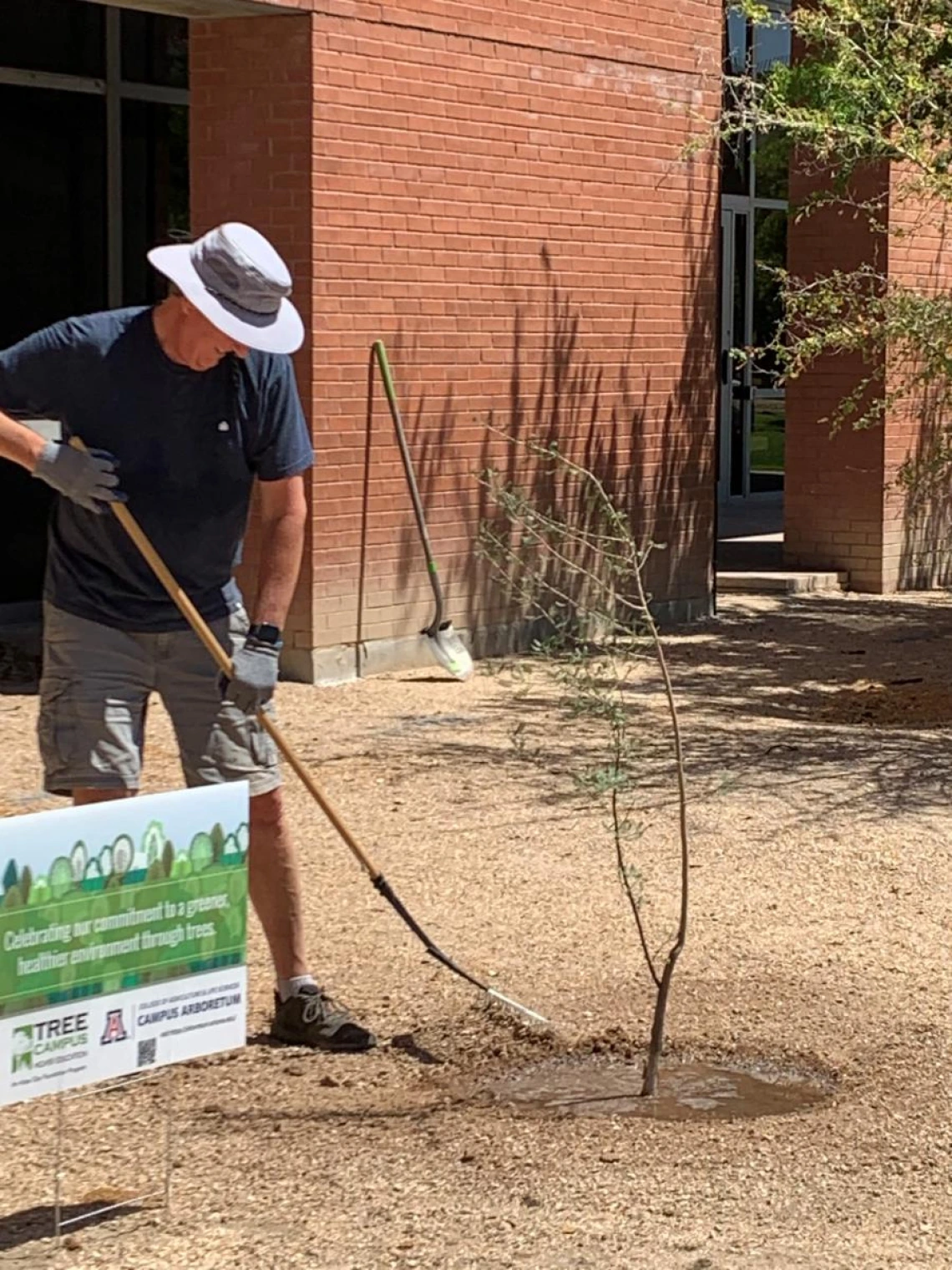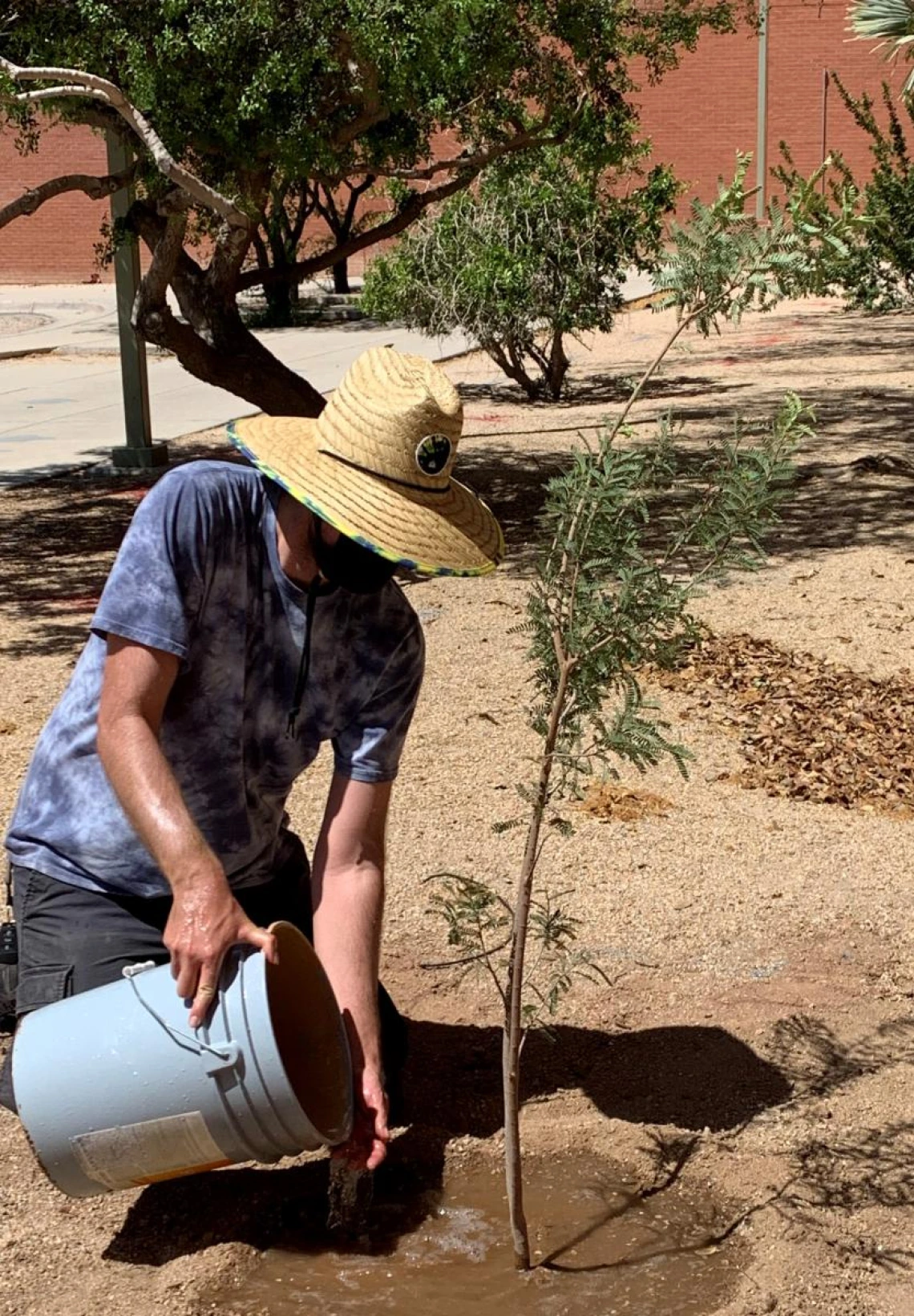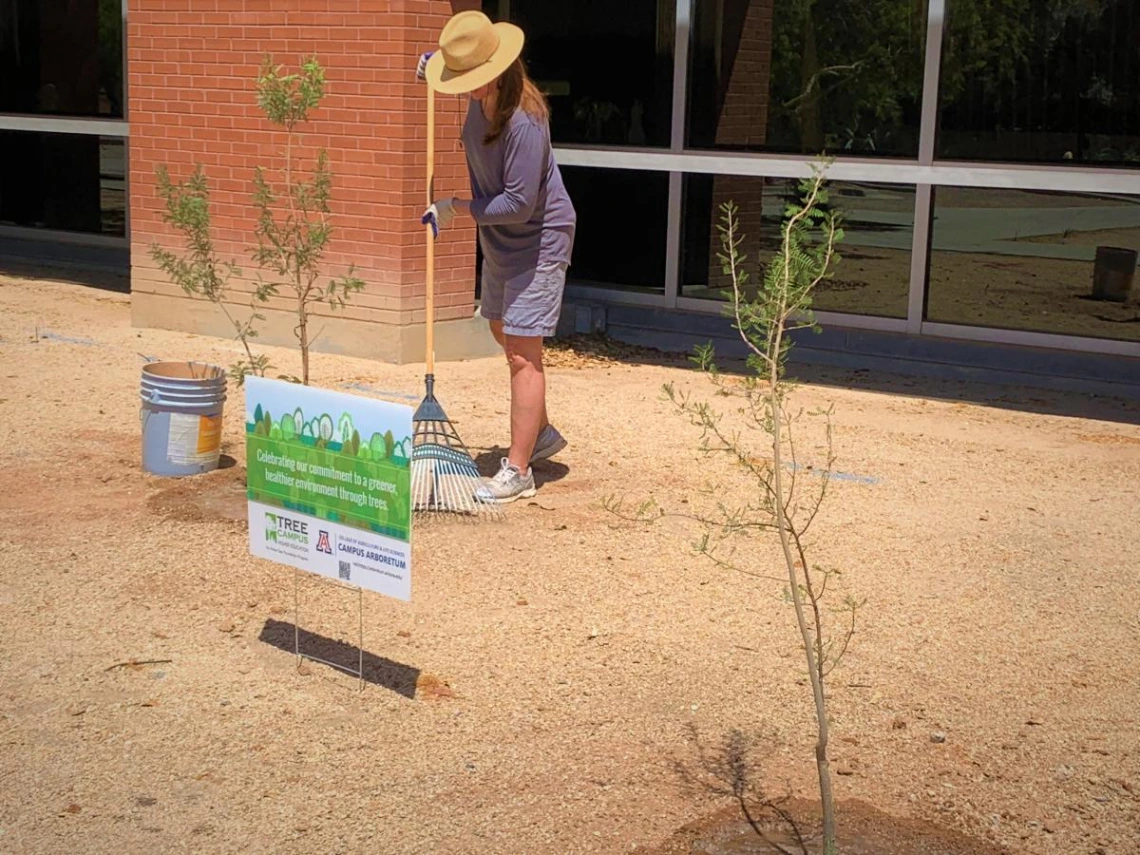One of the most important activities the Campus Arboretum accomplishes is the selection and planting of trees that enhance the educational value of the campus landscape. As a Land Grant Institution in the Sonoran Desert, a top priority in tree selection is the promotion of diversity, and adaptation to an increasingly hot, and dry climate. A second and complementary priority is the education and engagement of citizens and students in learning about the value of urban tree diversity. To this end, we host an Arbor Day Event each year to host the community is planting trees that celebrate and improve the resilience of the community's urban forest. In 2021, we identified, propagated, and installed a number of unusual and highly adapted species for the campus collection. Members of the community including grad and undergrad students, faculty, staff, administrators, and alums met on campus for the planting.

At each planting site, we a sign to highlight the plantings and encourage campus visitors to celebrate by planting trees too!
Arbor Day Plant List:

Bursera microphylla - this tree is native to desert regions in northwestern Mexico and the southwestern United States. Although it is generally a small tree, growing only 15-30 feet tall, it is somewhat succulent as it can store water in its thickened trunk and lower limbs. The tree is also unusual in that the tree structure has few branches, that are proportionately small relative to the size of the bulbous trunk. It is also appealing as it is highly fragrant (it is a relative of frankenscense). Three of these trees were planted on campus at the 2021 Arbor Day Event. Since the species is a little frost tender, we chose warm microclimates to provide the protection it might need in future colder winters.

Schottia afra var. angustifolia
Schotia afra var. angustifolia - this tree is native to South Africa and Namibia, where it grows to a height of about 15 feet tall. Amazingly, it requires about 5" of rain per year! Further, we love it for its potential as a water-saving residential tree because of it's upright habit (branches grow upward, away from pedestrians), its deeply pigmented evergreen leaves, and saturated red blooms. In 2021, it was planted south of the Gould Simpson building where a number of other African and Australian legumes are growing as a collection. (https://commons.wikimedia.org/wiki/File:Schotia_afra_var._angustifolia0…)

Jatropha cinerea (1 ct) - This small drought-deciduous tree is endemic to Arizona where it survives on little water below 4000 ft elevation. As a member of the Euphorbiaceae, it has milky sap that is an unusual deep red color. The sap is used to tan leather and the plant has many other uses for humans and animals. We like it for its goose-foot, lobed and bright green foliage, small stature suited to residential scale properties, and for the charming pink-red urn-shaped flowers.

Agave salmiana (giant agave)
Agave salmiana (3 ct) - this succulent is commonly called the giant agave. Some cultivars of the species have the potential at maturity to grow to 12' tall and wide with a flower inflorescence extending up to 60' in the air! The straight species grows about 8' wide and tall with a flower bolt extending 20-40'. Besides its impressive size, the giant agave is also valuable for making agave wine although it is a little finnicky in our climate with moderate heat and cold tolerance. For this reason, all three of these were placed on campus in a place with high pedestrian traffic/visibility, in filtered shade on a southwest corner to provide a more moderate climate in summer and winter, respectively. (Photo: https://commons.wikimedia.org/wiki/File:Agave_salmiana_ferox.JPG)

Dicliptera resupinata (3 ct) - this small perennial plant is native to the Sonoran Desert, where it is commonly called Arizona foldwing. It requires little water but does best in filtered sun. It is valued for it's unusual heart-shaped leaves, and irridescent purple flowers. Three of these were planted in the Joseph Wood Krutch Garden. (Photo: https://www.americansouthwest.net/plants/wildflowers/dicliptera-resupin…)
To expand the value of this planting event, we will also create or expand educational content about these plants on our species description pages. The speces research done previously to guide us in selection will be expanded by undergraduate interns in the near future and then published on the Campus Arboretum species description pages for public learning. Botanical signs with QR codes will also be manufactured to link campus visitors wishing to learn more about the plants to the published online descriptions.







